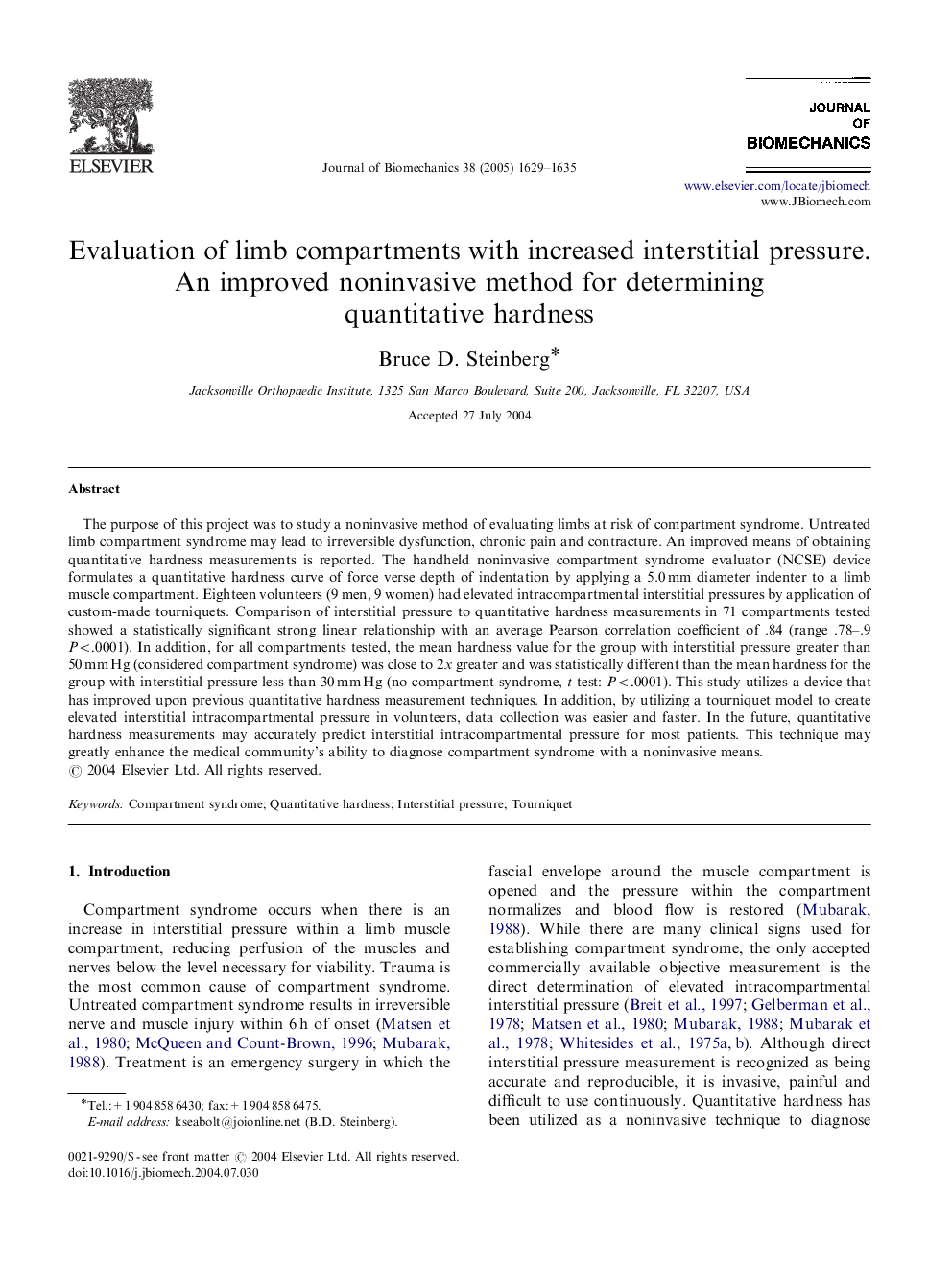| Article ID | Journal | Published Year | Pages | File Type |
|---|---|---|---|---|
| 10433627 | Journal of Biomechanics | 2005 | 7 Pages |
Abstract
The purpose of this project was to study a noninvasive method of evaluating limbs at risk of compartment syndrome. Untreated limb compartment syndrome may lead to irreversible dysfunction, chronic pain and contracture. An improved means of obtaining quantitative hardness measurements is reported. The handheld noninvasive compartment syndrome evaluator (NCSE) device formulates a quantitative hardness curve of force verse depth of indentation by applying a 5.0 mm diameter indenter to a limb muscle compartment. Eighteen volunteers (9 men, 9 women) had elevated intracompartmental interstitial pressures by application of custom-made tourniquets. Comparison of interstitial pressure to quantitative hardness measurements in 71 compartments tested showed a statistically significant strong linear relationship with an average Pearson correlation coefficient of .84 (range .78-.9 P<.0001). In addition, for all compartments tested, the mean hardness value for the group with interstitial pressure greater than 50 mm Hg (considered compartment syndrome) was close to 2x greater and was statistically different than the mean hardness for the group with interstitial pressure less than 30 mm Hg (no compartment syndrome, t-test: P<.0001). This study utilizes a device that has improved upon previous quantitative hardness measurement techniques. In addition, by utilizing a tourniquet model to create elevated interstitial intracompartmental pressure in volunteers, data collection was easier and faster. In the future, quantitative hardness measurements may accurately predict interstitial intracompartmental pressure for most patients. This technique may greatly enhance the medical community's ability to diagnose compartment syndrome with a noninvasive means.
Related Topics
Physical Sciences and Engineering
Engineering
Biomedical Engineering
Authors
Bruce D. Steinberg,
